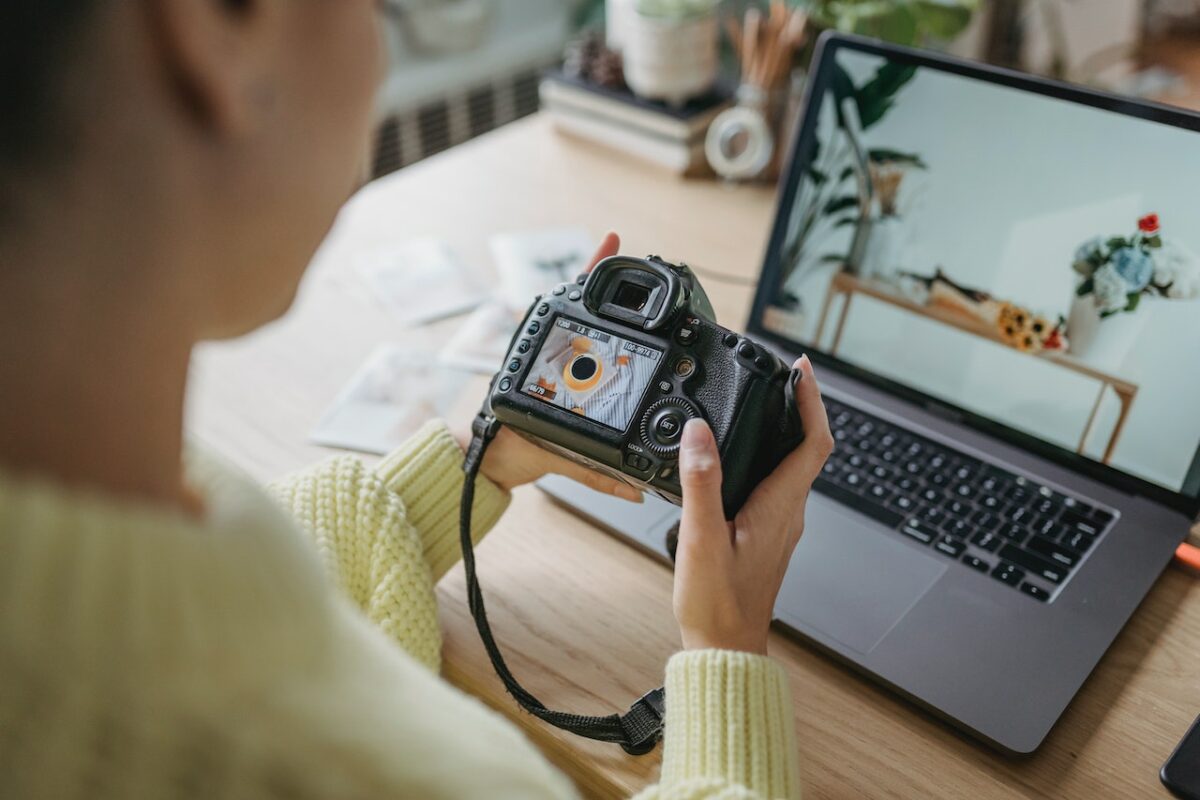
As an Amazon Associate we earn from qualifying purchases.
If you are editing your real estate photos in Photoshop, you might wonder which color channel can result in clear and detailed photos. The following 8-bit vs 16-bit guide helps you understand when to use the 16-bit version and when to convert to the 8-bit version.
Quick Navigation
Bit depth, also known as pixel depth or color depth, specifies the number of bits used by each color component of a single pixel to indicate the color of that pixel. Usually, a digital image comprises millions of pixels, and each pixel contains a single color created with the values of red, green, and blue.

That means the number of bits basically tells how many colors a photo can display. Keeping in mind that a computer can’t read decimal numbers, bits are an expression of the colors in binary format. However, in Adobe Photoshop, the color depth is expressed as an RGB channel of red, green, and blue.
With each color having 8 bits, this gives 24 bits per pixel when using the 8 bits channel. On the other hand, with each color having 16 bits, you get 48 pixels per channel when using the 16 bits channel.
8-bit refers to a color depth that consists of eight binary digits when expressed in the binary format of 0 and 1. However, this doesn’t mean that an 8-bit image can only display eight colors. Instead, you need to compute the total number of color possibilities the photo can display.
Simply raise 2 to the number of bits used to record the image. In this case, you raise 2 to power 8 to get 256 tonal variations when using the 8-bit color depth. Keep in mind that 256 is the tone value of one color, and you need to get the total tone variations when using RGB.
To get the total, multiply 256 reds x 256 greens x 256 blues. This gives you a total of 16.7 million RGB values.
16-bit refers to a pixel depth consisting of 16 binary digits expressed in the binary format of 0 and 1. Like in the 8-bit expression, when you raise 2 to power 16, you’ll get 65,536 tonal values when using the 16-bit color depth.
That means the total tone variations when working with a 16-bit color depth will be 65,536 reds x 65,536 greens x 65,536 blues. This gives you a total of around 281 trillion RGB values.

Generally, the 8-bit and 16-bit color depths are supported by most image editing applications such as Photoshop. However, the large tonal variation difference between the two-pixel depths makes them have the following similarities and differences.
Although the 16-bit have more tone values compared to the 8-bit images, the two versions have the following similarities
Even if both 8-bit and 16-bit images can display millions of colors, their difference in color spectrum range makes them have the following format and file size differences.
Although Photoshop uses complex algorithms to carry out photo editing tasks, the user interface for editing the colors is simplified to a range of 0 to 255. This simplification affects how you use the 8-bit and 16-bit channels.
For instance, although the 8-bit color depth has 256 tone variations, the range is from 0 to 255, as you'll be counting from 0, not 1. That means the Photoshop user interface favors the 8-bit channel, as the values you will be working with on the interface also range from 0 to 255.
On the other hand, you will be editing the 16-bit channel indirectly as you'll be using the values of 0 to 255, whereas you are editing values of 0 to 32,768. For instance, if you reduce the value from 255 to 254, you will have reduced from 32,769 to 32,639, which is a difference of 129 shades in the 16-bit channel.

Photoshop fully covers the 256 tonal variations on the 8-bit pixel depth, from 0 to 255. This ensures that the image you export from Photoshop as an 8-bit image is indeed an 8-bit. On the other hand, Photoshop doesn't fully cover the 16-bit channel.
For instance, if you navigate to the information panel on the right-hand side of the screen with the image opened in Photoshop, the 16-bit channel scale ranges from 0 to 32,638. If you count from zero instead of one, the total tonal variations in the Photoshop 16-bit channel are 32,639 instead of 65,536.
That means the 16-bit channel in Photoshop is actually 2 raised to the power of 15 + 1 bit instead of 2 raised to the power of 16. That means the 16-bit image you export from Photoshop contains around half of the tonal variations a 16-image should contain.
Most modern DSLR cameras and mirrorless cameras capture images in JPEG or RAW file formats. A JPEG file contains processed image data, where the camera processor processes and compresses the data and discards the unused data. Usually, the processed JPEG image is in 8-bit color depth.
On the other hand, the RAW file contains uncompressed image data, which you need to process using photo editing software such as Lightroom or Adobe Camera Raw. Although different cameras can capture different color depths, such as 10-bit, 12-bit, and 14-bit, generally, all 16-bit images are RAW files.
File size refers to the amount of space the image takes in your external hard drive or SD card. In most cases, the file size is directly proportional to the amount of data stored in the file. Keeping in mind that a 16-bit image is usually a RAW file that contains a wider dynamic range and greater color spectrum, it usually has a larger file size than an 8-bit image.
The major distinguishing factor between 8-bit and 16-bit images is banding. Banding is a visible transition from one color to another in an image instead of a gradient that fades smoothly.
Usually, 8-bit images are prone to banding, especially when you do extensive color edits in Photoshop using curves. This banding is usually visible as artifacts when you zoom in on the image. An 8-bit image also tends to lose details after extensive color manipulations.
On the other hand, 16-bit images have a wider dynamic range and lots of color information to manipulate, minimizing the chances of banding even when using curves in Photoshop.

Since 8-bit images are usually in JPEG and occupy smaller hard drive space, they are the best version to use under the following circumstances.
Considering that 16-bit images have more tonal variations and a wider dynamic range, they are the best version to use in the following situations
Generally, the 16-bit version is more versatile and a better option as you can have a wider dynamic range and more tone values to manipulate when editing and then convert it to the more compatible 8-bit version when exporting.
The above 8-bit vs 16-bit guide shows the better compatibility of the 8-bit images and the greater color spectrum and wider dynamic range of the 16-bit images. Generally, you should consider editing in 16-bit and exporting in 8-bit.
